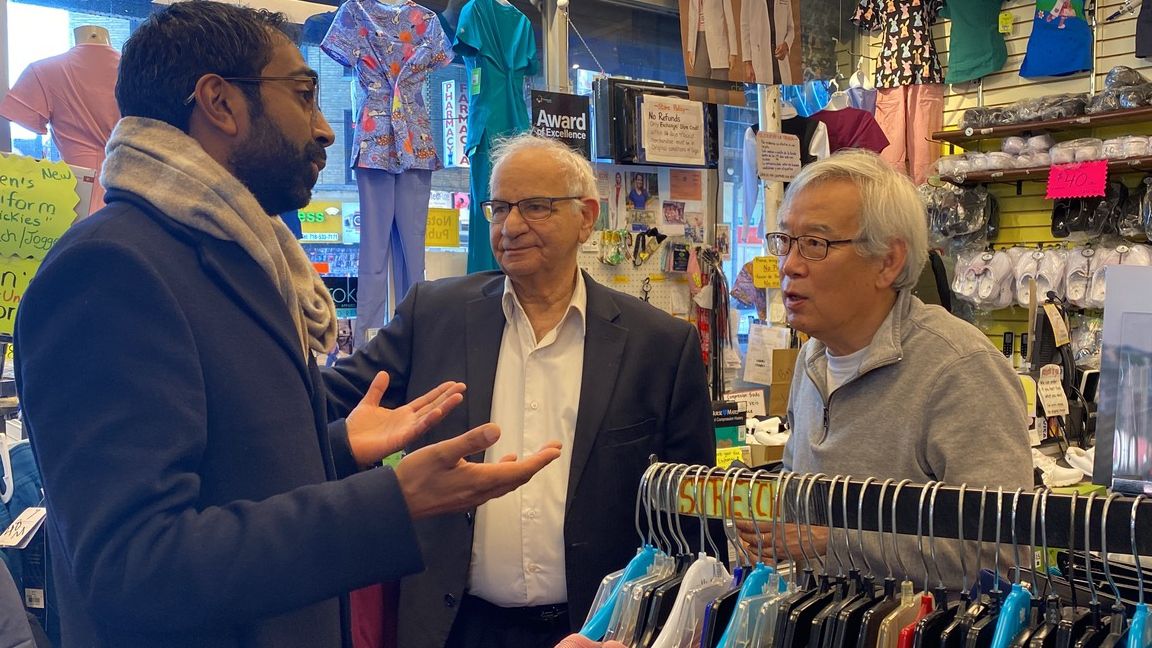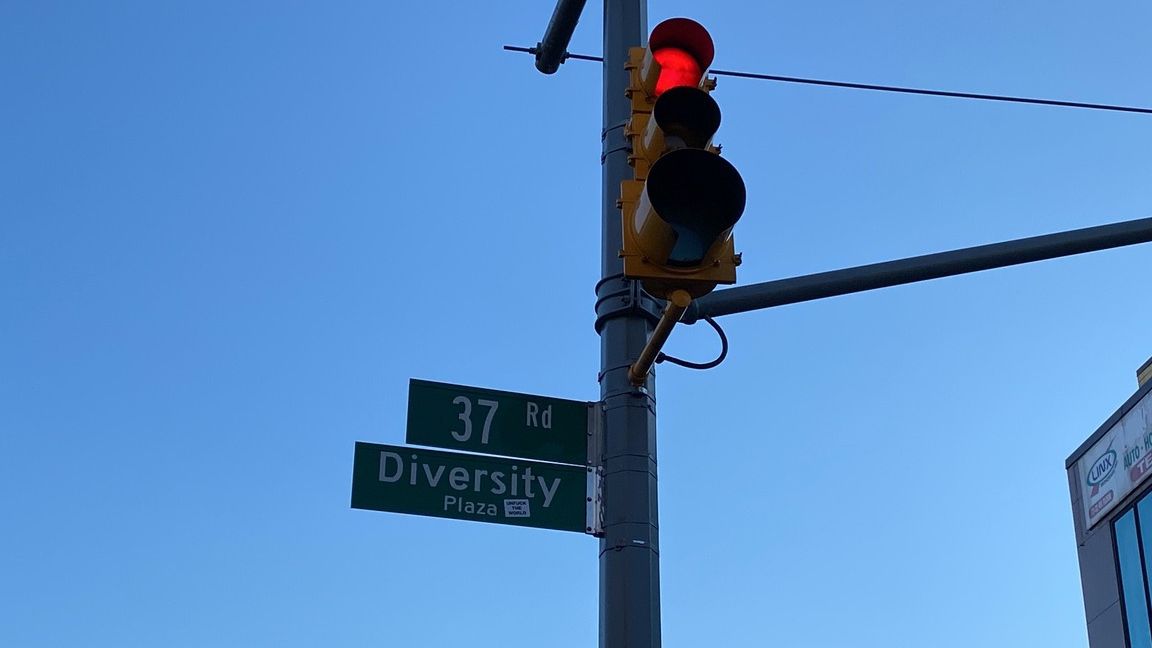Underneath the 7 train on Roosevelt Avenue, John Park has run his store, Four Seasons Uniform, for nearly 40 years.
Park, who emigrated from Korea in 1980, says Jackson Heights is often a first stop for people who are new to the country.
“This is the area for immigration. People’s first nest,” he said.
What You Need To Know
- Queens earned the nickname “The World’s Borough”
- More than 160 languages are spoken in Jackson Heights, making it the most diverse neighborhood in New York City
- Initially, the neighborhood was conceived as a garden community. The developer's restrictive covenants barred Black and Jewish people from moving in
- Currently, nearly 60% of the more than 175,000 people who live in Jackson Heights are foreign-born
From Parks’ nursing scrubs — sold to the diverse staff at nearby Elmhurst Hospital — to a boutique five storefronts away.
His longtime friend, Shiv Dass, is selling exquisite handmade saris.
When Dass first came to New York in 1966, he says the Indian community in Jackson Heights was almost nonexistent.
“There was nothing, no business here. Then when Indians came, and we had little resentment from some local residents, they thought the Indians are taking over and slowly, slowly the street became very popular,” Dass said.

During the 1970s, immigrants from Southeast Asia moved into Jackson Heights and opened up stores on 74th Street.
The area is now known to many as “Little India” — one of many enclaves within the neighborhood, each stemming from waves of immigration from different counties.
“That’s the beauty of this place. We have Indians, Bangladeshis, Pakistanis from all over Asia. Nepalis, Chinese. Everybody’s here,” Dass said.
According to data from NYU’s Furman Center, nearly 60% of the 175,000 people who live in Jackson Heights are foreign born.
The passage of the Immigration and Nationality Act in 1965 lead to a dramatic increase of immigrants from places beyond Europe, such as moving into Queens.
Conflict and unrest in Colombia in the 1980s lead to a mass migration.
Many Colombians moved into Jackson Heights and opened businesses — earning the nickname “Little Colombia” on one stretch of Roosevelt Avenue.
During the 1990s, immigrants from Mexico and Latin America moved to the borough too.
Currently, a majority of the residents are Hispanic — nearly 65%.
Leticia Herrera moved to Jackson Heights from Mexico in 1986.
“It was one of my dreams for me and my husband to come here to the United States to exhibit something and work and get ahead,” said Herrera, who owns Lety’s Bakery.

The most recent influx is immigrants from the Himalayas, particularly Tibet and Nepal, have moved into the neighborhood.
Many left to escape a decade long civil war in Nepal.
When Jackson Heights was first developed by the Queensboro Corporation in the early 1920s as a garden community, it was advertised to wealthy white, Anglo-Saxon Manhattanites as an escape from crowded city life.
The original plans outlined a restricted community. Developers barred African Americans and Jews from living in the area.
Fast forward to 2023, that vision could not be further from Jackson Heights’ current reality.
“Like small United Nations,” Park said.
A melting pot in the city’s most diverse borough.



